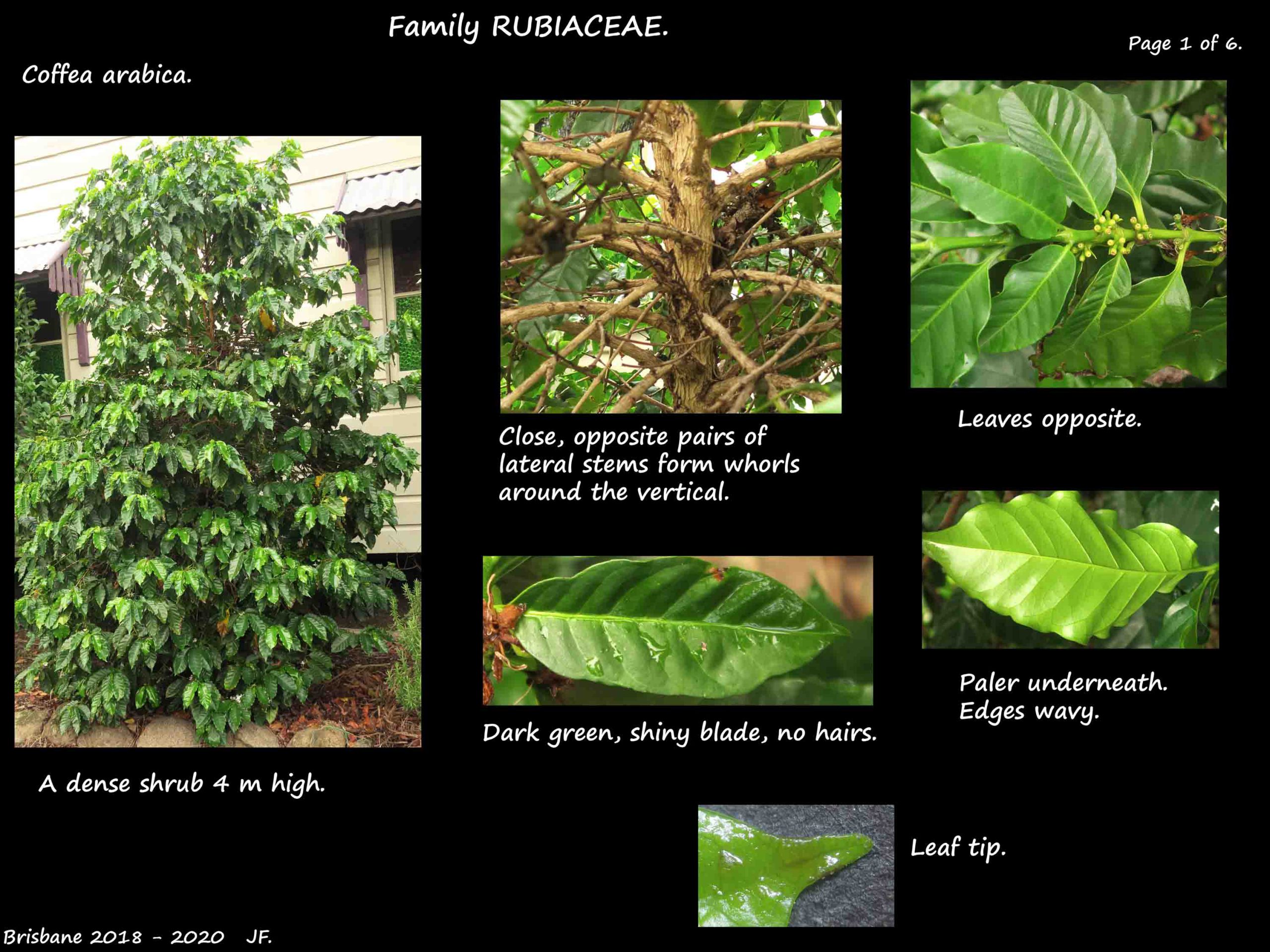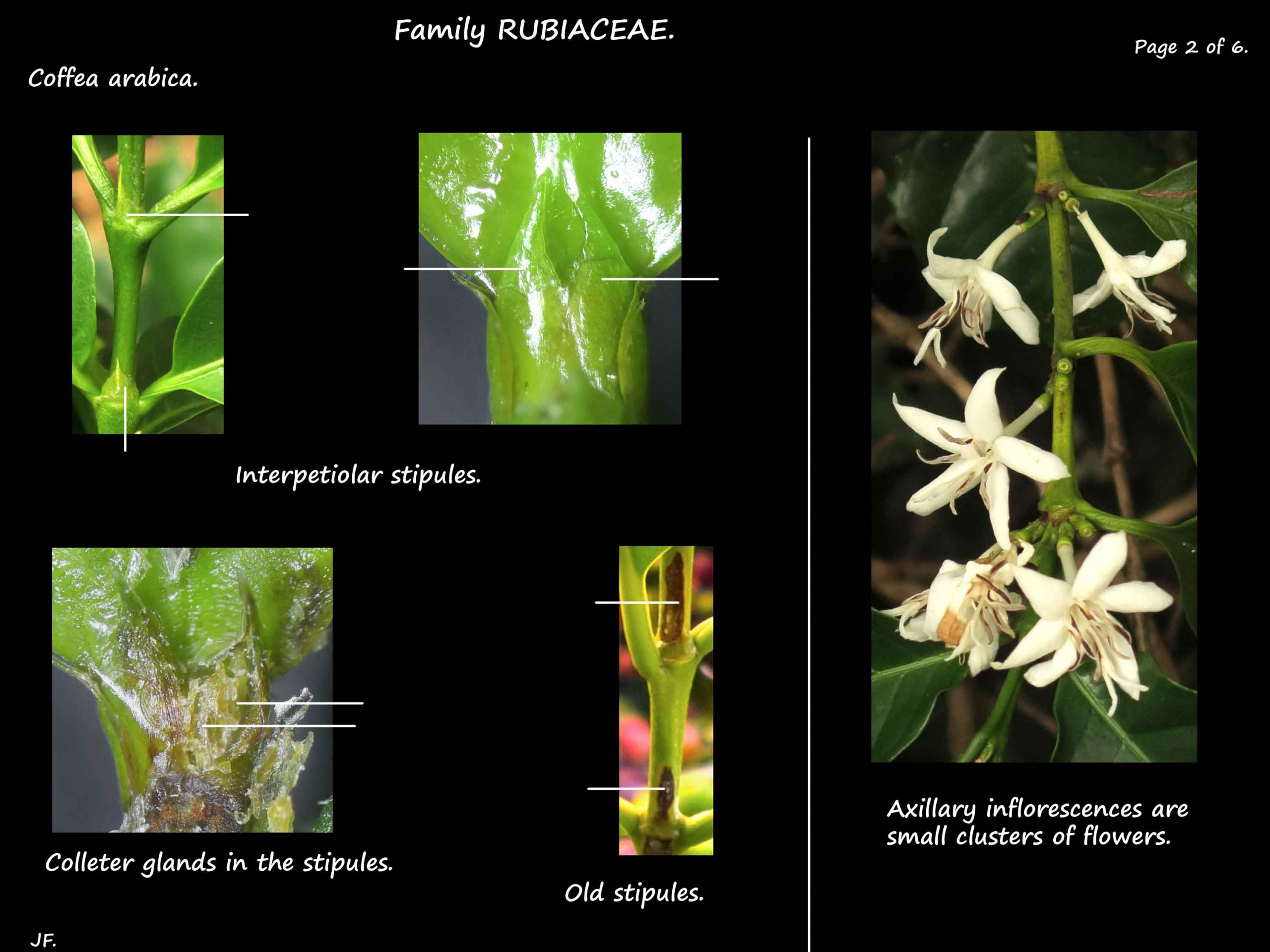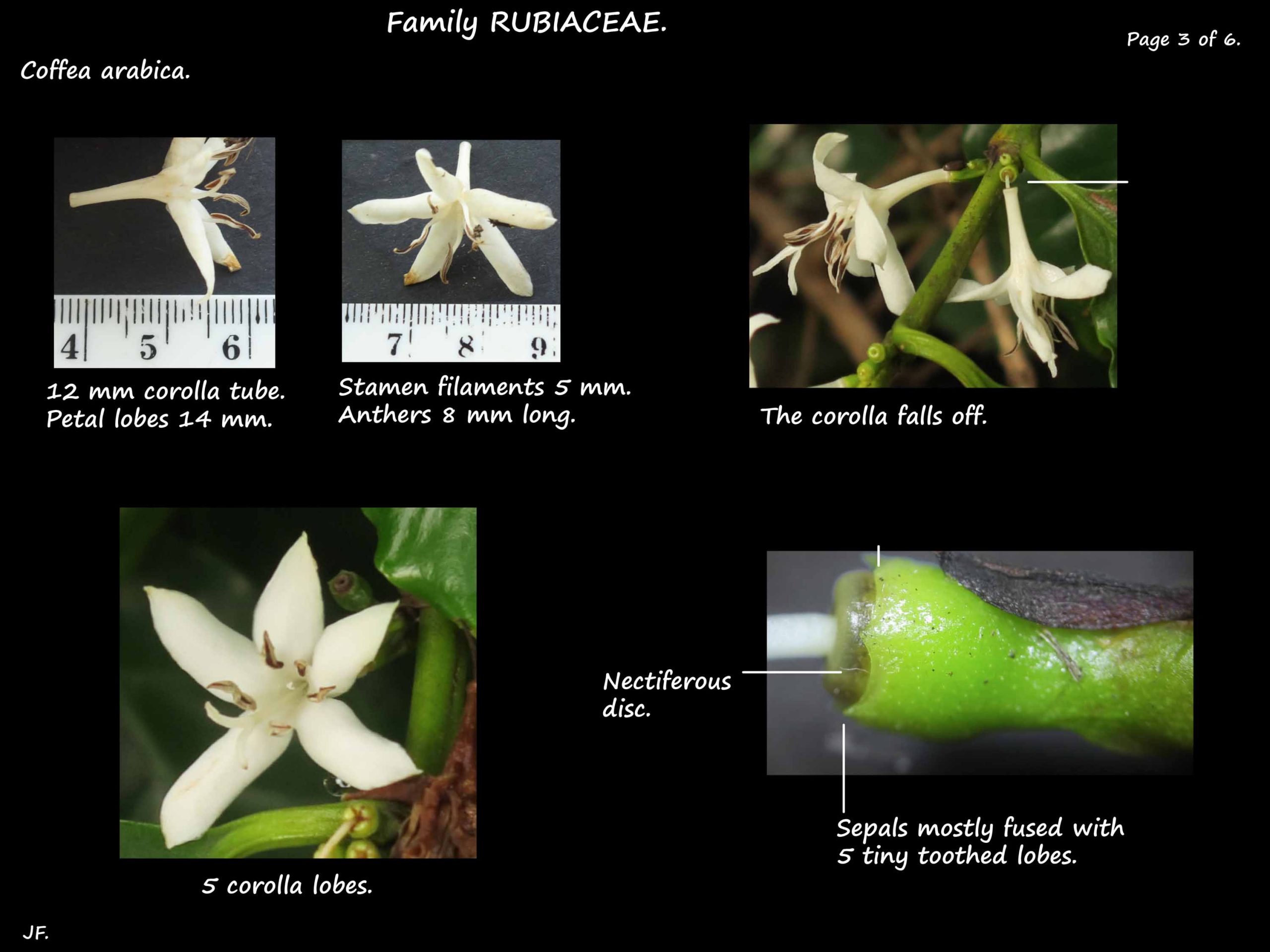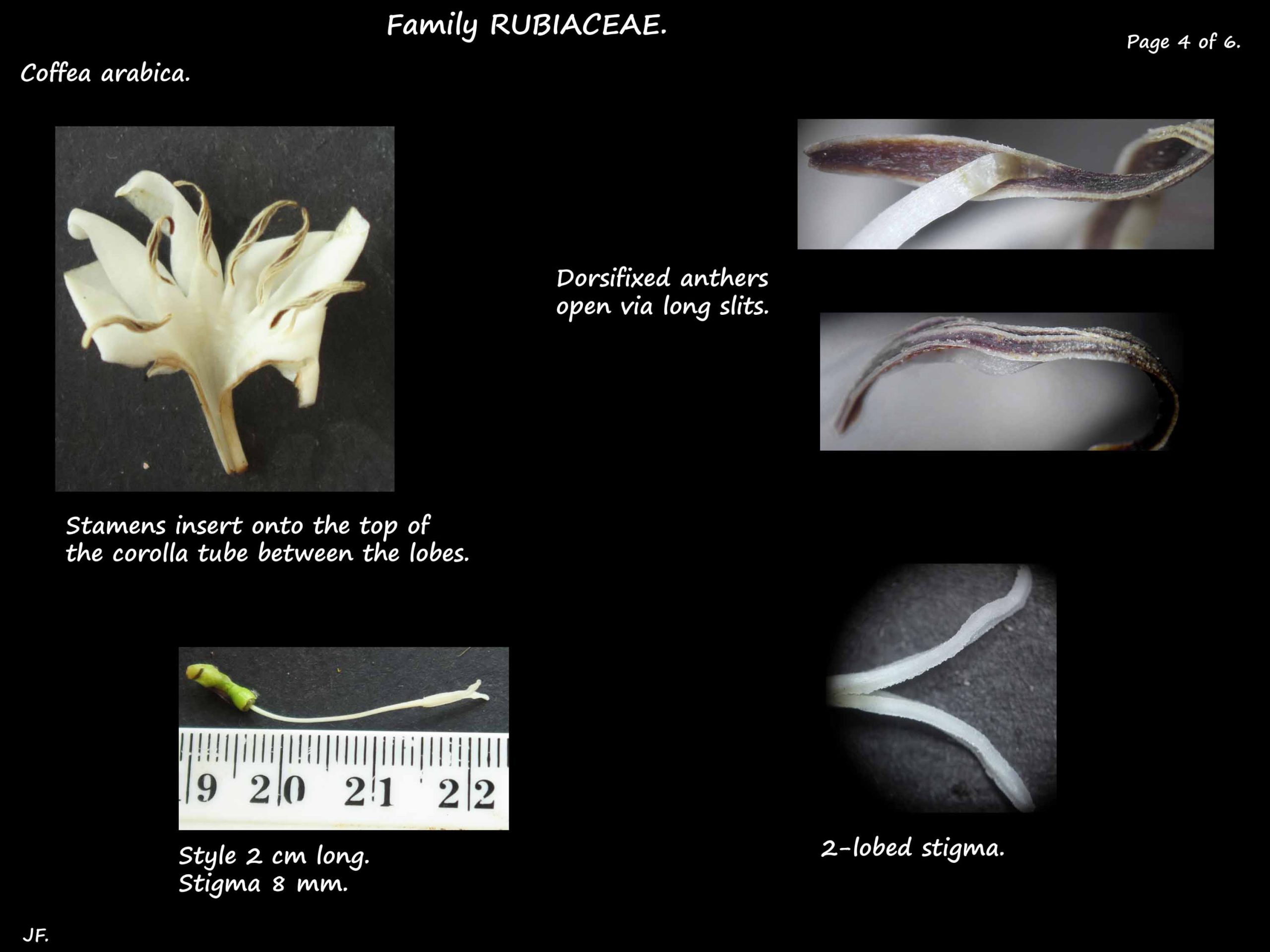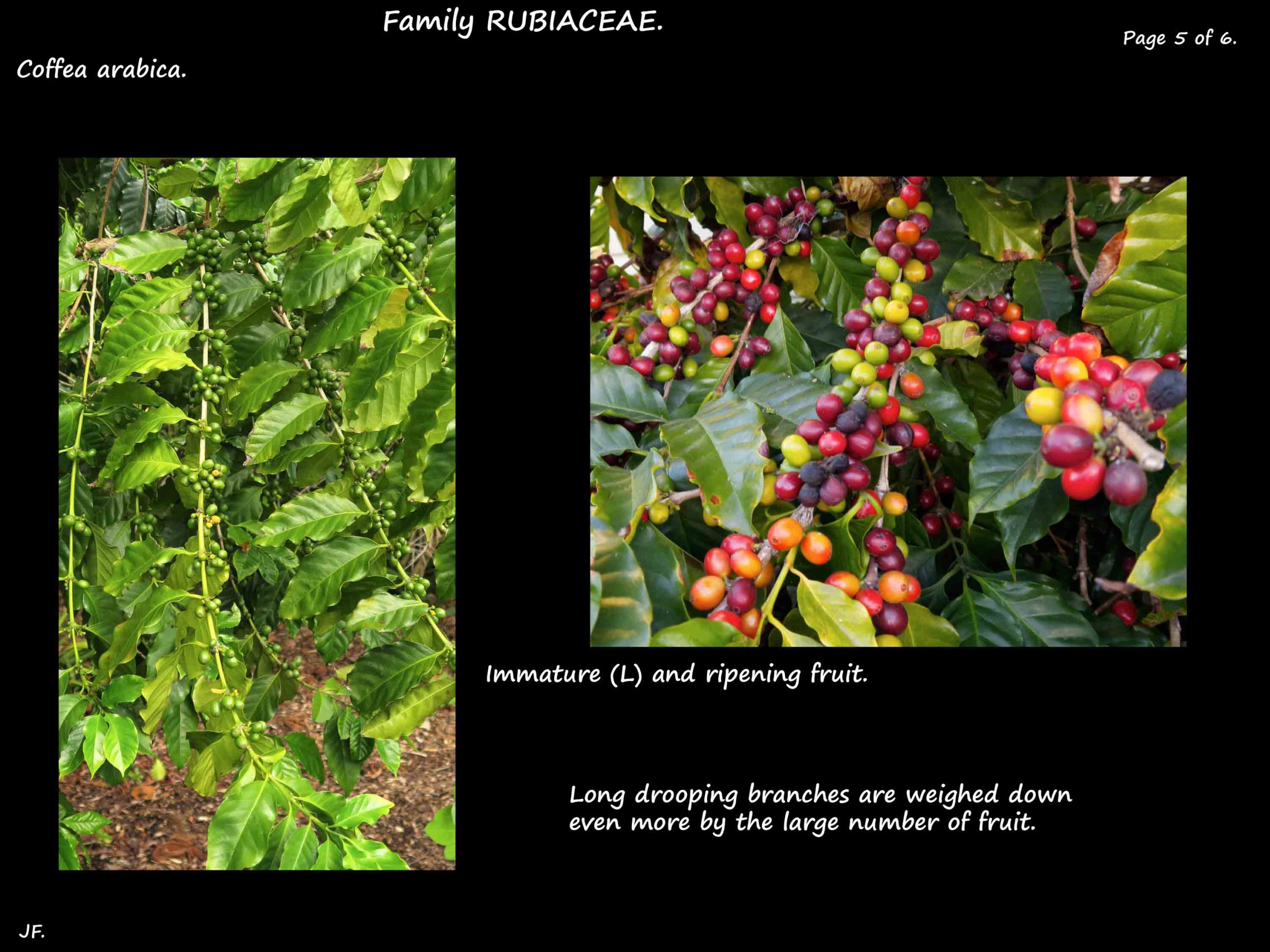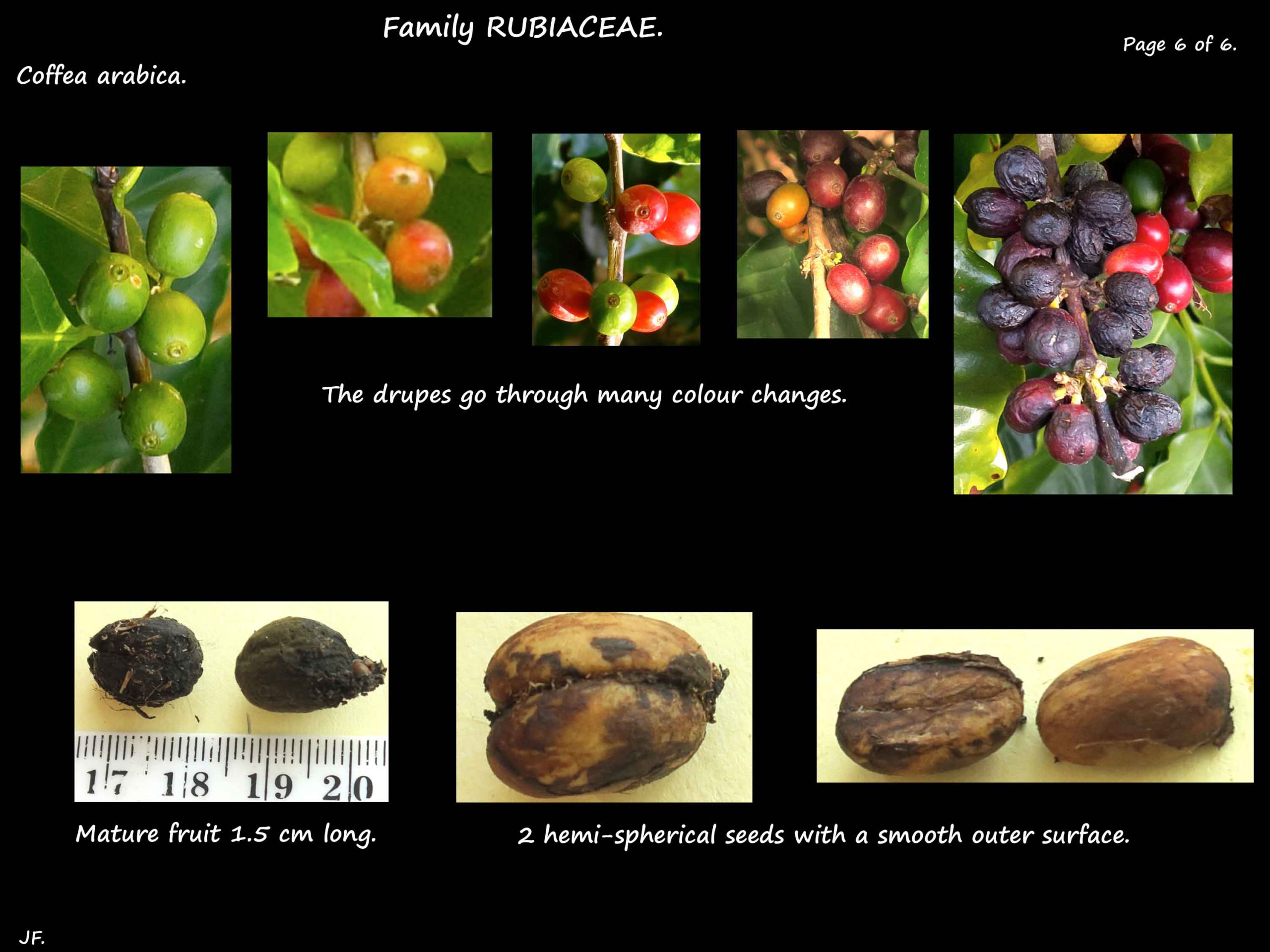Coffea arabica.
Family Rubiaceae.
There are around 122 species of coffee plants that are native to Africa or Asia.
Coffea arabica, the type species, is the one most commonly grown.
Others grown for their coffee beans include C. canephora, C. liberica and C. excelsa.
The caffeine in the beans protects the plants against herbivores.
They are bushy shrubs usually around 3 m high but can grow to 12 m.
The straight, upright stems have many opposite pairs of lateral branches.
The close set pairs of lateral branches form whorls around the upright stem.
The long laterals arch downwards.
The leaves, on short petioles, are in opposite pairs along the laterals.
The blades are elliptic to lanceolate and up to 12 cm long with a pointed tip.
In older leaves the edge is wavy.
They are a dark, shiny green above and paler underneath.
There are no hairs.
There are short, interpetiolar stipules with colleter glands.
Axillary inflorescences are clusters of white flowers that are up to 15 mm across
Flowers are on very short stalks.
The sepals are 2 mm long with the bases fused and 5 tiny pointed lobes on the rim.
The corolla typically has 5 petals but often there are flowers with 4 or 6 on the same plant.
Their fused bases form a tube about 12 mm long with the lobes about 14 mm long.
The lobes have pointed tips that may curve back.
The 5 (4 – 6) stamens insert into the top of the corolla tube between the lobes.
The filaments are 4 – 5 mm long and the narrow anthers 8 mm.
The dorsifixed anthers open via long slits.
The pale nectiferous disc sits on top of the inferior ovary.
The long white style holds a 2-lobed stigma well above the corolla.
The fruit are ellipsoidal drupes up to 15 mm across.
They mature to red or purple then brown and fall off.
Each typically has 2 seeds or beans but there may be one or more than 2.
The seeds are hemispherical with the flat surfaces adjacent.
The outer, convex surface is smooth.
J.F.

